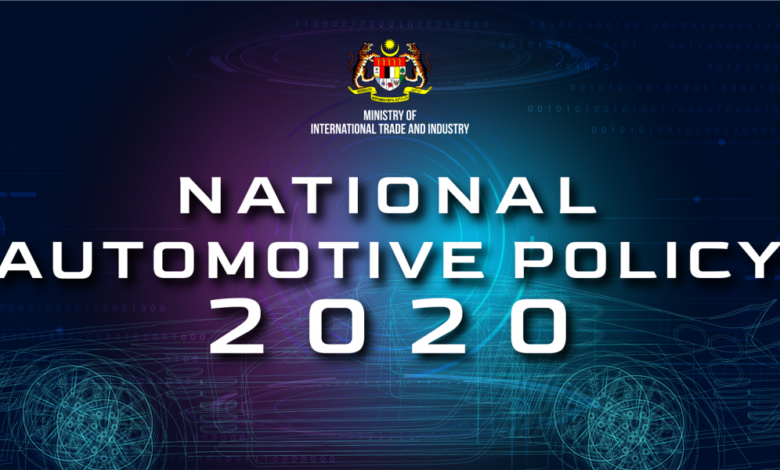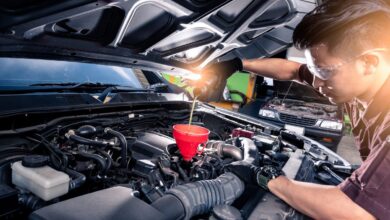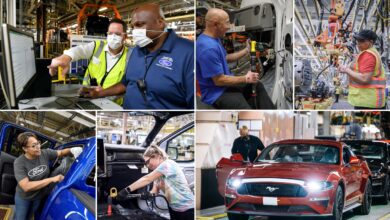Key Highlights of India’s New National Automotive Policy

A National Automotive Policy is a comprehensive set of guidelines and regulations established by a government to promote and regulate the automotive industry within its borders.
The primary objectives of a National Automotive Policy typically include:
- Enhancing the competitiveness of the domestic automotive industry by creating an enabling environment for manufacturers, suppliers, and related industries to thrive.
- Promoting domestic manufacturing and increasing the localization of automotive components and parts to reduce reliance on imports and strengthen the local supply chain.
- Encouraging research and development activities to drive innovation, technological advancements, and the development of new automotive technologies and products.
- Facilitating exports of domestically produced vehicles and components to tap into global markets and generate foreign exchange earnings.
- Ensuring compliance with environmental and safety standards to promote sustainable and responsible manufacturing practices.
- Developing skilled human resources and fostering employment opportunities in the automotive sector.
A well-designed National Automotive Policy can unlock the potential of this industry, positioning the country as a competitive player in the global automotive landscape.
History and Evolution
The history of India’s National Automotive Policy can be traced back to the early years of industrialization in the country. After independence, the government recognized the importance of developing a robust automotive industry to support the nation’s economic growth and self-reliance.
In the 1950s and 1960s, the government implemented import substitution policies, encouraging domestic production of vehicles and components. The Automotive Industry Development Committee was established in 1958, laying the groundwork for the industry’s growth.
The 1980s marked a significant shift in the automotive policy landscape. The government began to liberalize the sector, allowing for joint ventures and foreign collaborations. This move paved the way for the entry of global automakers and the introduction of modern technologies and manufacturing practices.
In the late 1990s and early 2000s, the government introduced several initiatives to promote the automotive industry’s growth and competitiveness. The Auto Policy of 2002 aimed to establish a globally competitive automotive industry in India by attracting foreign direct investment, promoting research and development, and encouraging exports.
Key milestones in the evolution of the National Automotive Policy include the establishment of the Automotive Mission Plan (AMP) in 2006, which set ambitious targets for the industry’s growth and development.
Over the years, the National Automotive Policy has undergone several revisions and updates to address emerging challenges and opportunities. The introduction of electric vehicles, the push for sustainable mobility solutions, and the adoption of advanced technologies have been key focus areas in recent policy iterations.
Policy Framework
The National Automotive Policy provides a comprehensive regulatory framework to govern and promote the automotive industry within the country. It encompasses various aspects, including manufacturing guidelines, taxation policies, incentive schemes, and trade regulations.
One of the key focus areas is the implementation of stringent emission and safety standards for vehicles produced or imported into the country. These standards are periodically updated to align with global benchmarks, ensuring environmental sustainability and passenger safety.
To encourage domestic manufacturing and attract investments, the policy offers a range of fiscal incentives and subsidies. These may include tax rebates, duty exemptions, or subsidized land and infrastructure for setting up new manufacturing facilities or expanding existing ones.
It aims to strike a balance between protecting the domestic industry and promoting healthy competition through strategic import duties and tariffs.
It encourages collaboration between manufacturers, academic institutions, and research organizations through various funding mechanisms and incentive programs.
Manufacturing and Production
India’s National Automotive Policy aims to bolster domestic manufacturing and production capabilities within the automotive sector. A key focus is on developing robust and self-reliant supply chains, promoting the establishment of state-of-the-art assembly lines, and fostering a thriving ecosystem of component suppliers.
The policy framework encourages automakers to set up manufacturing facilities within the country, leveraging India’s cost-effective labor force and strategic location. Incentives and subsidies are offered to attract investments in cutting-edge production technologies, automation, and digital transformation initiatives.
Emphasis is placed on developing automotive clusters and industrial parks, which co-locate OEMs (Original Equipment Manufacturers), ancillary units, and tertiary service providers. These clusters facilitate seamless coordination, minimize logistical challenges, and enable economies of scale.
To support the growth of domestic component suppliers, the policy advocates for technology transfer, skill development programs, and access to affordable financing options. Indigenous component manufacturers are encouraged to adopt global best practices, enhance quality standards, and explore export opportunities.
Supply chain optimization is a critical aspect, with measures taken to streamline logistics, improve infrastructure connectivity, and reduce lead times. The policy promotes the adoption of digital supply chain management systems, enabling real-time monitoring, predictive analytics, and efficient inventory management.
Automakers are incentivized to increase the domestic content in their vehicles, fostering backward integration and reducing reliance on imports.
Research and Development
The National Automotive Policy places a strong emphasis on promoting research and development (R&D) in the automotive sector. This focus aims to foster innovation, drive technological advancements, and encourage sustainable practices within the industry.
One of the key objectives of the policy is to establish a robust R&D ecosystem that supports the development of cutting-edge technologies. This includes incentives for automakers and component manufacturers to invest in research facilities, collaborate with academic institutions, and engage in joint ventures with global technology leaders.
The policy recognizes the importance of reducing the automotive industry’s carbon footprint and promoting environmentally friendly solutions.
To facilitate R&D efforts, the policy provides for the establishment of dedicated automotive research centers and testing facilities. These state-of-the-art facilities are designed to support the development and validation of new technologies, ensuring that domestic manufacturers can compete on a global scale.
It outlines initiatives to enhance technical education and training programs, fostering a skilled workforce capable of driving innovation in the automotive sector.
Automotive Exports
The National Automotive Policy places significant emphasis on promoting automotive exports to enhance the global competitiveness of the domestic industry. India’s automotive sector has witnessed remarkable growth in recent years, with increasing production capacities and improving quality standards.
One of the key objectives of the policy is to facilitate seamless access to international markets through favorable trade agreements and partnerships. By negotiating comprehensive trade deals with major automotive markets, the policy aims to reduce tariff barriers, streamline regulations, and create a level playing field for Indian manufacturers.
Investments are being channeled towards upgrading ports, improving transportation links, and establishing dedicated automotive export zones. These measures aim to reduce lead times, minimize supply chain disruptions, and ensure timely delivery of vehicles and components to global customers.
Exports
To support export-oriented businesses, the policy provides a range of incentives and support mechanisms. These may include tax benefits, subsidies, access to finance, and streamlined regulatory processes.
By fostering a conducive environment for automotive exports, the National Automotive Policy aims to position India as a significant player in the global automotive value chain.
Imports
The National Automotive Policy aims to strike a balance between supporting domestic manufacturing and allowing controlled imports to meet consumer demand and promote competition. Import regulations and tariffs play a crucial role in achieving this balance.
India imposes import duties on fully-built vehicles (CBUs) and automotive components to protect the domestic industry. The tariff rates vary depending on the engine capacity, vehicle segment, and country of origin.
Automotive imports are permitted through approved channels, subject to compliance with safety, emission, and homologation norms.
The policy encourages the import of cutting-edge technologies and components that are not yet manufactured locally. This approach aims to facilitate technology transfer and encourage domestic manufacturers to adopt advanced technologies, ultimately enhancing the competitiveness of the Indian automotive industry.
This measure aligns with the nation’s broader goals of promoting sustainable mobility and reducing carbon emissions.
Balancing domestic production and imports is a delicate task. Regular reviews and adjustments to import regulations and tariffs are undertaken to maintain this balance and adapt to evolving market dynamics.
Environmental and Safety Standards
Governments around the world have implemented stringent environmental and safety standards for the automotive industry to address concerns related to air pollution, fuel efficiency, and passenger safety. These standards play a crucial role in shaping the national automotive policy and driving innovation within the sector.
Emission Norms
Emission norms are regulations that set limits on the permissible levels of pollutants released by vehicles into the atmosphere.
Fuel Efficiency
Improving fuel efficiency is a key priority for national automotive policies, as it directly impacts energy consumption and greenhouse gas emissions. Governments have implemented Corporate Average Fuel Economy (CAFE) standards, which mandate automakers to achieve a certain level of fleet-wide fuel efficiency. These standards incentivize the development of more efficient engines, lightweight materials, and alternative powertrain technologies like hybrid and electric vehicles.
Safety Regulations
Passenger safety is a paramount concern in the automotive industry, and national policies aim to ensure that vehicles meet rigorous safety standards. Automakers must comply with these regulations by incorporating cutting-edge safety features and undergoing rigorous testing procedures.
Governments often implement a combination of mandatory standards and voluntary incentives to encourage automakers to adopt environmentally friendly and safer technologies.
Skill Development and Employment
The National Automotive Policy places significant emphasis on skill development and employment generation within the automotive sector. The industry’s growth and technological advancements have created a pressing need for a skilled and competent workforce. To address this demand, the policy outlines comprehensive strategies for training and workforce development.
One of the key initiatives is the establishment of dedicated automotive training institutes and skill development centers across the country. These institutes offer specialized courses and certification programs tailored to the industry’s requirements. The curriculum covers a wide range of areas, including automotive design, manufacturing processes, quality control, and advanced technologies like electric vehicles and autonomous driving systems.
These programs provide hands-on experience and exposure to real-world scenarios, enabling trainees to develop practical skills and industry-specific knowledge.
Employment
To ensure a steady supply of skilled professionals, the policy emphasizes the integration of automotive-related courses and curricula into existing technical and vocational education systems. This approach aims to create a pipeline of skilled workers from an early stage, aligning their education and training with the industry’s evolving needs.
Rapid technological advancements in the automotive sector necessitate continuous learning and adaptation.
The policy encourages investment in new manufacturing facilities, research and development centers, and ancillary industries, thereby stimulating job growth across the automotive value chain.
Challenges and Future Outlook
The automotive industry is undergoing rapid transformation driven by technological advancements and evolving consumer preferences.
Electric Vehicles (EVs): The transition towards EVs is a global phenomenon, driven by environmental concerns and the need for sustainable mobility solutions. To stay competitive, the National Automotive Policy must prioritize the development of EV infrastructure, incentives for EV adoption, and support for domestic EV manufacturing. This includes investments in charging station networks, battery production facilities, and research into advanced battery technologies.
Autonomous Driving: The advent of autonomous driving technology has the potential to revolutionize transportation and enhance road safety.
Policy Revisions: As the automotive industry evolves, the National Automotive Policy must be periodically reviewed and revised to address emerging trends and challenges. This may involve updating emissions standards, incentivizing the adoption of advanced technologies, and fostering collaboration between industry, academia, and government to drive innovation.
Case Studies
Successful Implementations
Several countries have implemented comprehensive national automotive policies that have yielded positive results for their domestic automotive industries. One notable example is Thailand’s Eco-Car Program, introduced in 2007. This policy provided tax incentives and other benefits for automakers to produce eco-friendly vehicles within the country.
The NAP aimed to transform Malaysia into a regional hub for energy-efficient vehicles (EEVs) by offering incentives for EEV production and promoting the development of supporting industries. This policy has contributed to the growth of Malaysia’s automotive sector, with several major automakers establishing manufacturing facilities in the country.
Best Practices
-
Comprehensive Approach: Effective policies address various aspects of the automotive industry, including manufacturing, research and development, trade, environmental standards, and human capital development.
-
Long-term Vision and Stability: Successful policies are underpinned by a clear long-term vision and consistent implementation, providing certainty and predictability for industry players to make strategic investments.
-
Periodic Review and Adjustment: Policies are regularly reviewed and adjusted to address evolving market conditions, technological advancements, and changing industry dynamics.
Lessons Learned
Several lessons can be drawn from the experiences of countries with successful national automotive policies:
-
Policy Alignment: Aligning automotive policies with broader national economic and development goals is crucial for maximizing their impact and ensuring sustained support.
-
Localization and Skill Development: Promoting localization of supply chains and investing in skill development programs are essential for building a robust and self-sustaining automotive industry.
-
Adaptability and Responsiveness: Policies must be flexible and responsive to market changes, technological disruptions, and shifting consumer preferences to remain relevant and effective.
-
Stakeholder Engagement: Continuous engagement with industry stakeholders is vital for identifying challenges, addressing concerns, and ensuring that policies remain aligned with industry needs.
-
Monitoring and Evaluation: Establishing robust monitoring and evaluation mechanisms is crucial for assessing policy effectiveness, identifying areas for improvement, and making data-driven adjustments.
By learning from successful implementations, best practices, and lessons learned, policymakers can develop and implement effective national automotive policies tailored to their specific economic, industrial, and societal contexts.
Stakeholder Perspectives
Manufacturers’ Views:
Automotive manufacturers have a vested interest in the National Automotive Policy as it shapes the business environment they operate in. Many manufacturers advocate for policies that promote domestic manufacturing, provide incentives for research and development, and facilitate access to global markets through favorable trade agreements. They often emphasize the need for a stable and predictable policy framework that allows for long-term planning and investment decisions.
Consumers’ Perspectives:
Consumers are primarily concerned with the availability of affordable, safe, and environmentally-friendly vehicles. They expect the National Automotive Policy to strike a balance between promoting the domestic industry and ensuring fair competition, which can lead to better product choices and competitive pricing.
Policymakers’ Viewpoints:
They must consider economic growth, job creation, environmental sustainability, and consumer welfare. Policymakers often seek input from various stakeholders, including manufacturers, industry experts, and consumer groups, to develop comprehensive and inclusive policies.
Industry Experts’ Insights:
They analyze market trends, technological advancements, and global competition to assess the policy’s effectiveness and potential impact. Industry experts often advocate for policies that foster innovation, encourage sustainable practices, and enhance the industry’s competitiveness on a global scale.
Policy Impact and Evaluation
One of the key indicators used to gauge the policy’s impact is the growth in domestic automotive production. A well-designed and implemented policy should stimulate increased manufacturing activity, leading to higher production volumes and a stronger domestic automotive industry.
The automotive industry is a significant employer, and a successful policy should lead to the creation of new job opportunities across various sectors, including manufacturing, research and development, sales, and ancillary services. The number of direct and indirect jobs created, along with the quality of employment and skill development initiatives, can provide insights into the policy’s effectiveness.
Evaluation
Successful policies often encourage research and development activities, leading to the introduction of new technologies, improved vehicle designs, and enhanced production processes.
Regular monitoring and assessment are crucial to ensure that the policy remains relevant and adaptable to changing market conditions and evolving industry dynamics.
Regional and Global Comparisons
Examining automotive policies across different regions and countries provides valuable insights and a comparative perspective.
In the European Union, the Automotive Industry Transformation Platform (AITP) aims to support the transition towards sustainable and smart mobility solutions. This policy framework emphasizes electrification, digitalization, and the development of connected and autonomous vehicles.
In Asia, China’s Automotive Industry Development Policy has played a pivotal role in propelling the country’s automotive sector.
Global Comparisons
Many nations prioritize the development of electric and hybrid vehicles, driven by environmental concerns and the need for sustainable transportation solutions.
Conclusion and Recommendations
The National Automotive Policy has played a crucial role in shaping the automotive industry in the country. It has aimed to promote domestic manufacturing, encourage research and development, enhance exports, and ensure environmental sustainability.
A summary of the key points and recommendations for the future policy direction includes:
Summary of Key Points:
- The policy has been instrumental in establishing a robust automotive manufacturing base and fostering technological advancements.
- It has facilitated the growth of the domestic automotive industry and contributed to economic development.
Potential Improvements:
- Strengthen the policy framework to attract more foreign direct investment and technology transfer.
- Enhance incentives and support for electric vehicle production and infrastructure development.
- Streamline regulatory processes and reduce bureaucratic hurdles for faster implementation.
- Encourage public-private partnerships for research and development in emerging technologies.
- Adopt a more proactive approach to address the challenges posed by global competition and disruptive innovations.
Future Policy Directions:
- Prioritize the development of autonomous and connected vehicle technologies to stay ahead of the curve.
- Promote the adoption of circular economy principles in the automotive sector, emphasizing sustainability and resource efficiency.
- Foster collaboration between the automotive industry, academia, and research institutions to drive innovation.
- Develop a comprehensive roadmap for the transition towards electrified and zero-emission mobility solutions.
- Continuously review and update the policy to align with global trends, technological advancements, and changing consumer preferences.





